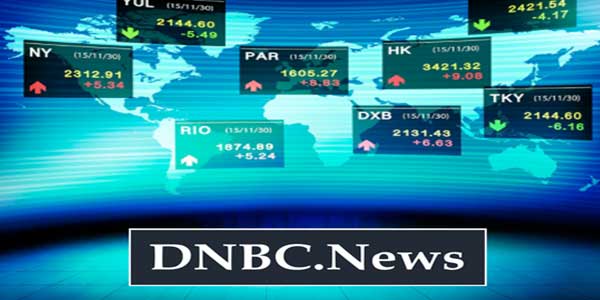In today’s rapidly evolving consumer landscape, where convenience, sustainability, and safety are paramount concerns, smart packaging emerges as a revolutionary solution. Beyond merely containing and preserving products, smart packaging integrates advanced technologies to provide enhanced functionality, interactivity, and information dissemination. From ensuring product authenticity to offering personalized experiences, smart packaging is reshaping the way consumers perceive and interact with products across various industries.
Understanding Smart Packaging
Smart packaging encompasses a diverse array of technologies aimed at optimizing packaging performance and consumer engagement. These technologies include:
- NFC (Near Field Communication): NFC-enabled packaging allows consumers to access product information, track authenticity, and even reorder items with a simple tap of their smartphones.
- QR Codes and Barcodes: By scanning QR codes or barcodes on packaging, consumers can access detailed product information, including ingredients, nutritional facts, and usage instructions.
- RFID (Radio Frequency Identification): RFID tags embedded in packaging enable real-time tracking of products throughout the supply chain, ensuring efficient inventory management and minimizing the risk of counterfeit products.
- Temperature and Time Indicators: These indicators provide visual cues to consumers regarding the freshness and safety of perishable goods, helping to prevent food waste and ensure product quality.
- Interactive Packaging: Incorporating elements such as augmented reality (AR) and gamification, interactive packaging creates immersive experiences that engage consumers and strengthen brand loyalty.
Advantages of Smart Packaging
1. Enhancing Consumer Engagement
Smart packaging facilitates direct communication between brands and consumers, enabling personalized interactions and fostering brand loyalty. Through features like QR codes and NFC technology, consumers can access relevant product information, promotions, and loyalty rewards, enhancing their overall shopping experience.
2. Ensuring Product Authenticity
Counterfeiting poses a significant threat to brand reputation and consumer safety. Smart packaging solutions, such as RFID tags and tamper-evident seals, enable consumers to verify product authenticity, mitigating the risk of counterfeit goods entering the market.
3. Improving Safety and Traceability
With the ability to track products in real-time throughout the supply chain, smart packaging enhances traceability and transparency. In industries like pharmaceuticals and food and beverage, this capability is crucial for ensuring product safety, identifying potential issues, and facilitating targeted recalls if necessary.
4. Optimizing Inventory Management
RFID technology enables automated inventory tracking, reducing the need for manual stocktaking and minimizing errors. This streamlines supply chain operations, improves inventory accuracy, and ensures products are readily available to meet consumer demand.
5. Promoting Sustainability
This packaging solutions contribute to sustainability efforts by minimizing packaging waste and optimizing resource usage. For instance, temperature indicators help prevent food waste by ensuring optimal storage conditions, while RFID-enabled supply chain visibility enables more efficient logistics planning, reducing carbon emissions.
Applications Across Industries
1. Food and Beverage
Smart packaging in the food and beverage industry ensures product freshness, provides nutritional information, and enables traceability from farm to fork. Temperature indicators, RFID tags, and QR codes play pivotal roles in enhancing food safety and consumer confidence.
2. Pharmaceuticals
In the pharmaceutical sector, This packaging solutions enhance medication adherence, provide dosage reminders, and offer vital information about drug interactions and side effects. RFID-enabled tracking also helps combat counterfeit drugs and ensures regulatory compliance.
3. Cosmetics and Personal Care
SP innovations in cosmetics and personal care products offer consumers personalized recommendations, beauty tutorials, and ingredient insights. NFC technology and augmented reality experiences elevate the shopping journey, enabling consumers to make informed purchasing decisions.
4. Consumer Electronics
Packaging in the consumer electronics industry provides consumers with access to product manuals, troubleshooting guides, and warranty information. QR codes and NFC tags facilitate seamless product registration and support, enhancing the overall user experience.
Market Overview:
The smart packaging market, valued at USD 24,937.91 million in 2022, will reach USD 39,299.49 million by 2030, growing at a CAGR of 5.85% during the forecast period of 2023 to 2030.
Future Outlook
As technology continues to advance and consumer expectations evolve, the potential applications of smart packaging are limitless. From biodegradable sensors that monitor product freshness to interactive packaging designs that deliver immersive brand experiences, the future of packaging is undeniably intelligent.
In conclusion, smart packaging represents a paradigm shift in the way products are packaged, marketed, and consumed. By leveraging cutting-edge technologies, brands can enhance consumer engagement, ensure product safety, and contribute to sustainability initiatives. As smart packaging becomes increasingly ubiquitous, it is poised to redefine the future of packaging and elevate the overall consumer experience.
Read More About The Research @ https://www.databridgemarketresearch.com/reports/global-smart-packaging-market



